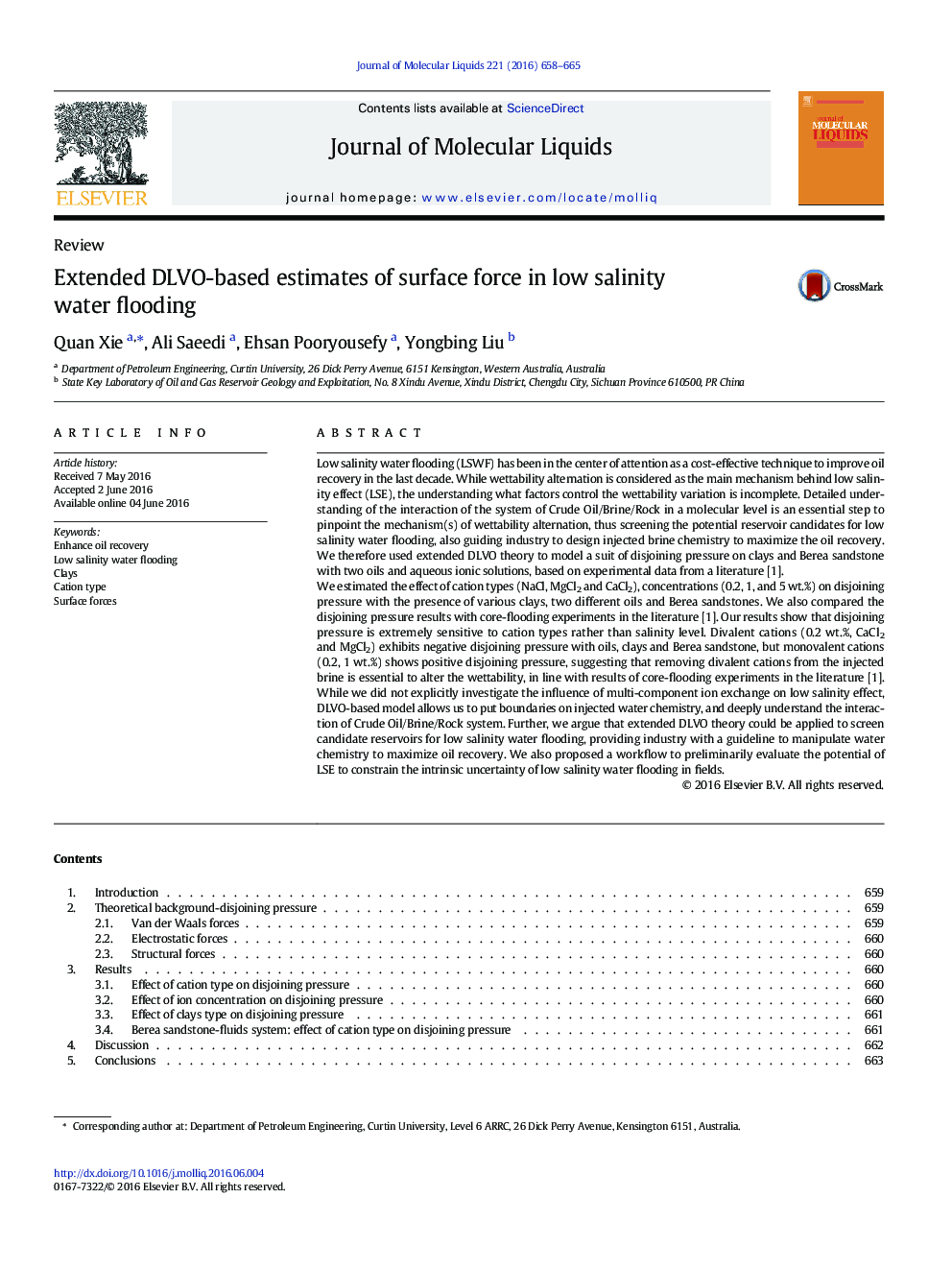| Article ID | Journal | Published Year | Pages | File Type |
|---|---|---|---|---|
| 5409751 | Journal of Molecular Liquids | 2016 | 8 Pages |
Abstract
We estimated the effect of cation types (NaCl, MgCl2 and CaCl2), concentrations (0.2, 1, and 5Â wt.%) on disjoining pressure with the presence of various clays, two different oils and Berea sandstones. We also compared the disjoining pressure results with core-flooding experiments in the literature [1]. Our results show that disjoining pressure is extremely sensitive to cation types rather than salinity level. Divalent cations (0.2Â wt.%, CaCl2 and MgCl2) exhibits negative disjoining pressure with oils, clays and Berea sandstone, but monovalent cations (0.2, 1Â wt.%) shows positive disjoining pressure, suggesting that removing divalent cations from the injected brine is essential to alter the wettability, in line with results of core-flooding experiments in the literature [1]. While we did not explicitly investigate the influence of multi-component ion exchange on low salinity effect, DLVO-based model allows us to put boundaries on injected water chemistry, and deeply understand the interaction of Crude Oil/Brine/Rock system. Further, we argue that extended DLVO theory could be applied to screen candidate reservoirs for low salinity water flooding, providing industry with a guideline to manipulate water chemistry to maximize oil recovery. We also proposed a workflow to preliminarily evaluate the potential of LSE to constrain the intrinsic uncertainty of low salinity water flooding in fields.
Related Topics
Physical Sciences and Engineering
Chemistry
Physical and Theoretical Chemistry
Authors
Quan Xie, Ali Saeedi, Ehsan Pooryousefy, Yongbing Liu,
